
Getting Started with SpriteKit
¥71.93
Develop fun and exciting games and create amazing animations for your existing apps with SpriteKit, Apple's 2D game development frameworkAbout This BookLearn the key concepts of game development in iOSTake advantage of SpriteKit to create your own games and improve your appsFollow the step-by-step chapters to create a complete product ready to submit to the App StoreWho This Book Is ForGetting Started with SpriteKit is for beginner-level iOS developers who want to add an extra edge to their apps and create amazing games using SpriteKit. It doesn’t matter whether you have experience in iOS development or not as this book will show you the swift tricks you can use to create games.What You Will LearnCreate and configure a SpriteKit project from scratchLoad and manage the basic elements of games such as sprites, labels, and geometrical primitivesHandle touch events, detect collisions, and play sound audio filesCreate complex elements, animate sprites, and run the parallax effectComplete your games with key components such as a main menu, transitions between scenes, a tutorial, and the ability to load and save dataIncrease the efficiency of your device using the accelerometer or by adding shaders, lights, and shadowsGain complementary techniques such as creating or finding audio resources, applying SpriteKit to apps, or using third-party toolsIn DetailSpriteKit is Apple’s game engine to develop native iOS games. Strongly boosted by the Apple Inc., Cupertino, it has increased in popularity since its first release. This book shows you the solutions provided by SpriteKit to help you create any 2D game you can imagine and apply them to create animations that will highlight your existing apps.This book will give you the knowledge you need to apply SpriteKit to your existing apps or create your own games from scratch.Throughout the book, you will develop a complete game. The beautiful designs implemented in the game in this book will easily lead you to learn the basis of 2D game development, including creating and moving sprites, and adding them to a game scene. You will also discover how to apply advanced techniques such as collision detection, action execution, playing music, or running animations to give a more professional aspect to the game. You will finish your first game by learning how to add a main menu and a tutorial, as well as saving and loading data from and to the player’s device.Finally, you will find out how to apply some mobile games techniques such as accelerometer use or touch detection.Style and approachWritten in an informal way with plenty of illustrative screenshots, this easy-to-follow and practical guide will help you get the most from SpriteKit. The main part of the book provides step-by-step instructions to develop of a complete product, while the last chapters give you some complementary techniques than can be used in mobile 2D game development.
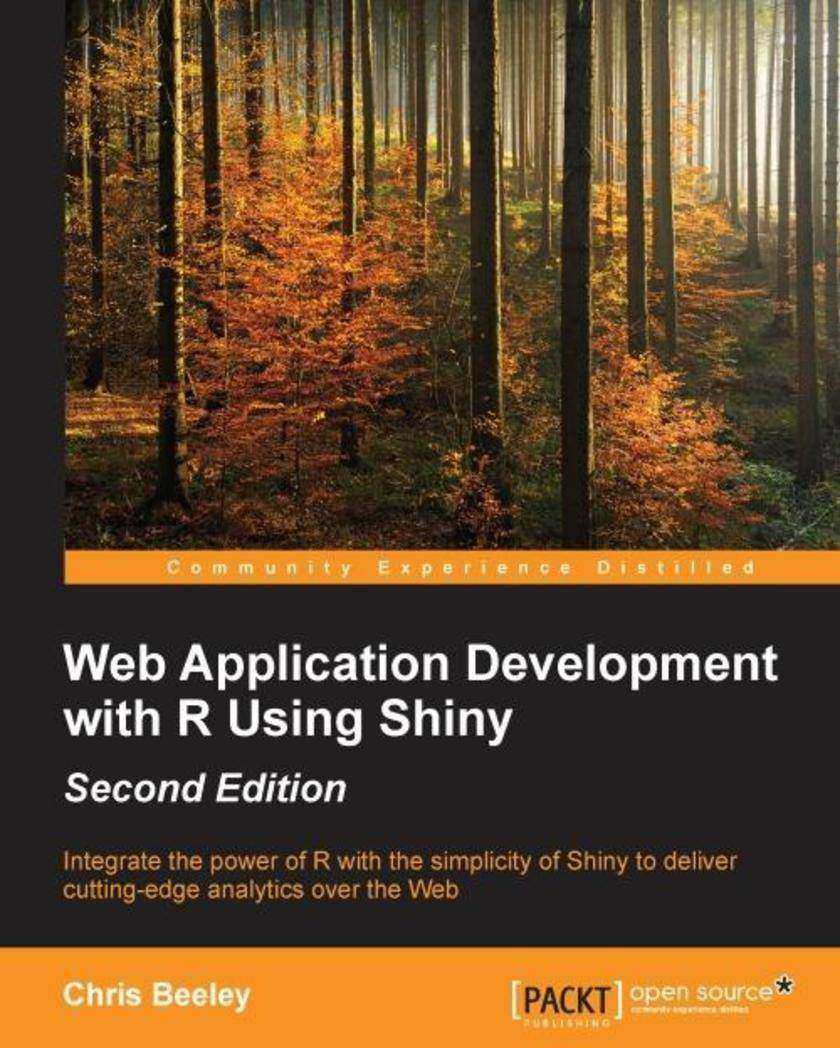
Web Application Development with R Using Shiny - Second Edition
¥71.93
Integrate the power of R with the simplicity of Shiny to deliver cutting-edge analytics over the WebAbout This BookUse Shiny's built-in functions to produce engaging user interfaces, and integrate them into your own web pagesImplement powerful user-contributed packages to access graphics from the web, make your own dashboards, use interactive maps, and moreExtend Shiny using JavaScript and jQuery with minimal coding using this handy, step-by-step guideWho This Book Is ForThis book is for anybody who wants to produce interactive data summaries over the web, whether you want to share them with a few colleagues or the whole world. No previous experience with R, Shiny, HTML, or CSS is required to begin using this book, although you should possess some previous experience with programming in a different language.What You Will LearnBuild interactive applications using Shiny's built-in widgetsUse the built-in layout functions in Shiny to produce user-friendly applicationsIntegrate Shiny applications with web pages and customize them using HTML and CSSHarness the power of JavaScript and jQuery to customize your applicationsEngage your users and build better analytics using interactive plotsDebug your applications using Shiny's built-in functionsDeliver simple and powerful analytics across your organization using Shiny dashboardsShare your applications with colleagues or over the Internet using cloud services or your own serverIn DetailR is a highly flexible and powerful tool for analyzing and visualizing data. Most of the applications built using various libraries with R are desktop-based. But what if you want to go on the webHere comes Shiny to your rescue!Shiny allows you to create interactive web applications using the excellent analytical and graphical capabilities of R. This book will guide you through basic data management and analysis with R through your first Shiny application, and then show you how to integrate Shiny applications with your own web pages. Finally, you will learn how to finely control the inputs and outputs of your application, along with using other packages to build state-of-the-art applications, including dashboards.Style and approachLearn by doing! Each chapter includes code and examples to use and adapt for your own applications. As the chapters progress, the code and examples are built upon until you have all the materials required to build a large, complex, real-world analytics application.

Mastering RabbitMQ
¥99.18
Master the art of developing message-based applications with RabbitMQAbout This BookLearn how to administer, manage, and extend your own message broker, RabbitMQDevelop clients to make a message bridge between your software systems using RabbitMQDiscover how to achieve proficiency with RabbitMQ with the well-defined de*ions of the topicsWho This Book Is ForIf you are an intermediate-level RabbitMQ developer, who wants to achieve professional-level expertise in the subject, this book is for you. You’ll also need to have a decent understanding of message queuing.What You Will LearnAdminister RabbitMQ using different toolsUnderstand the roots and details of messaging, message brokers, and AMQP protocolScale the RabbitMQ server using the clusters and high availability techniquesExtend RabbitMQ by developing the Erlang OTP-based applications that use the RabbitMQ APIManage the RabbitMQ server using its powerful toolsMonitor the RabbitMQ Server using different open source tools such as Nagios, Munin, and ZabbixEnsure your RabbitMQ’s security using SSL, SASL, and access controlDevelop RabbitMQ clients using Java, Python, and C# with an industry exampleIn DetailRabbitMQ is one of the most powerful Open Source message broker software, which is widely used in tech companies such as Mozilla, VMware, Google, AT&T, and so on. RabbitMQ gives you lots of fantastic and easy-to-manage functionalities to control and manage the messaging facility with lots of community support. As scalability is one of our major modern problems, messaging with RabbitMQ is the main part of the solution to this problem.This book explains and demonstrates the RabbitMQ server in a detailed way. It provides you with lots of real-world examples and advanced solutions to tackle the scalability issues.You’ll begin your journey with the installation and configuration of the RabbitMQ server, while also being given specific details pertaining to the subject. Next, you’ll study the major problems that our server faces, including scalability and high availability, and try to get the solutions for both of these issues by using the RabbitMQ mechanisms. Following on from this, you’ll get to design and develop your own plugins using the Erlang language and RabbitMQ’s internal API. This knowledge will help you to start with the management and monitoring of the messages, tools, and applications. You’ll also gain an understanding of the security and integrity of the messaging facilities that RabbitMQ provides. In the last few chapters, you will build and keep track of your clients (senders and receivers) using Java, Python, and C#.Style and approach An easy-to-follow guide, full of hands-on examples based around managing, monitoring, extending, and securing RabbitMQ and its internal tools. You will learn how to develop your own clients using Java, Python, and C#.
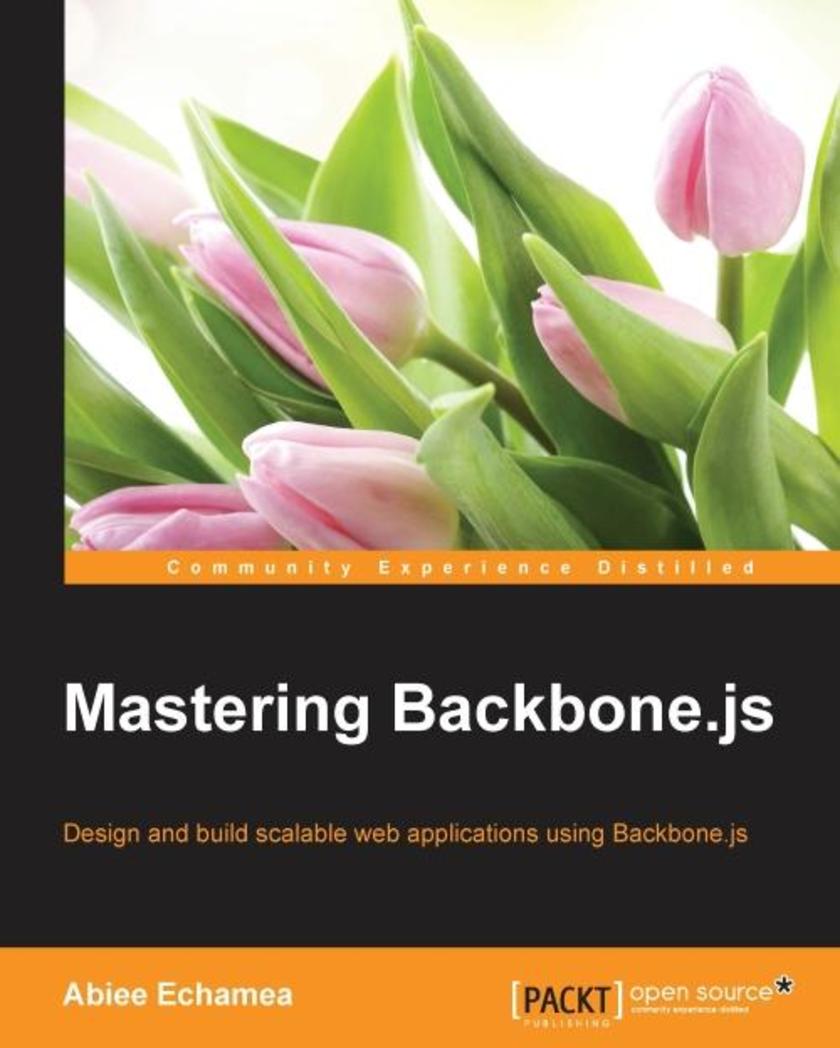
Mastering Backbone.js
¥90.46
Design and build scalable web applications using Backbone.jsAbout This BookLevel up your Backbone.js skills and create professional web applications with the best practicesUse the Backbone.js components in the right way and avoid maintenance nightmaresImprove your development workflow from application design to deploymentApply the best practices given in this tutorial to solve day-to-day problems in your applicationsWho This Book Is ForThis book is for those developers who know the basic concepts of Backbone.js and want to build scalable applications with it. If you are looking for the best practices of using Backbone.js applied to real work applications, this book is for you. You will be able to apply architectural principles to create amazing web applications easily.What You Will LearnBuild web applications that scale with Backbone.jsDesign a powerful architecture that eliminates maintenance nightmaresUse common patterns and best practices in Backbone.js web applications developmentsPack your applications to be deployed to production environmentsClean up your code organization to a simple and maintainable architectureTest your components and get confidence with your codeDeal with common scenarios like file uploading and login issuesIn DetailBackbone.js is a popular library to build single page applications used by many start-ups around the world because of its flexibility, robustness and simplicity. It allows you to bring your own tools and libraries to make amazing webapps with your own rules. However, due to its flexibility it is not always easy to create scalable applications with it. By learning the best practices and project organization you will be able to create maintainable and scalable web applications with Backbone.js.With this book you will start right from organizing your Backbone.js application to learn where to put each module and how to wire them. From organizing your code in a logical and physical way, you will go on to delimit view responsibilities and work with complex layouts.Synchronizing models in a two-way binding can be difficult and with sub resources attached it can be even worse. The next chapter will explain strategies for how to deal with these models. The following chapters will help you to manage module dependencies on your projects, explore strategies to upload files to a RESTful API and store information directly in the browser for using it with Backbone.js. After testing your application, you are ready to deploy it to your production environment. The final chapter will cover different flavors of authorization.The Backbone.js library can be difficult to master, but in this book you will get the necessary skill set to create applications with it, and you will be able to use any other library you want in your stack.Style and approachThis book takes a tutorial approach to help you scale your Backbone.js applications. It builds a web application using the best practices and applies architectural design principles to develop maintainable web-apps. Each chapter explains the design decisions and improves the project that is used as an example alongside the book.
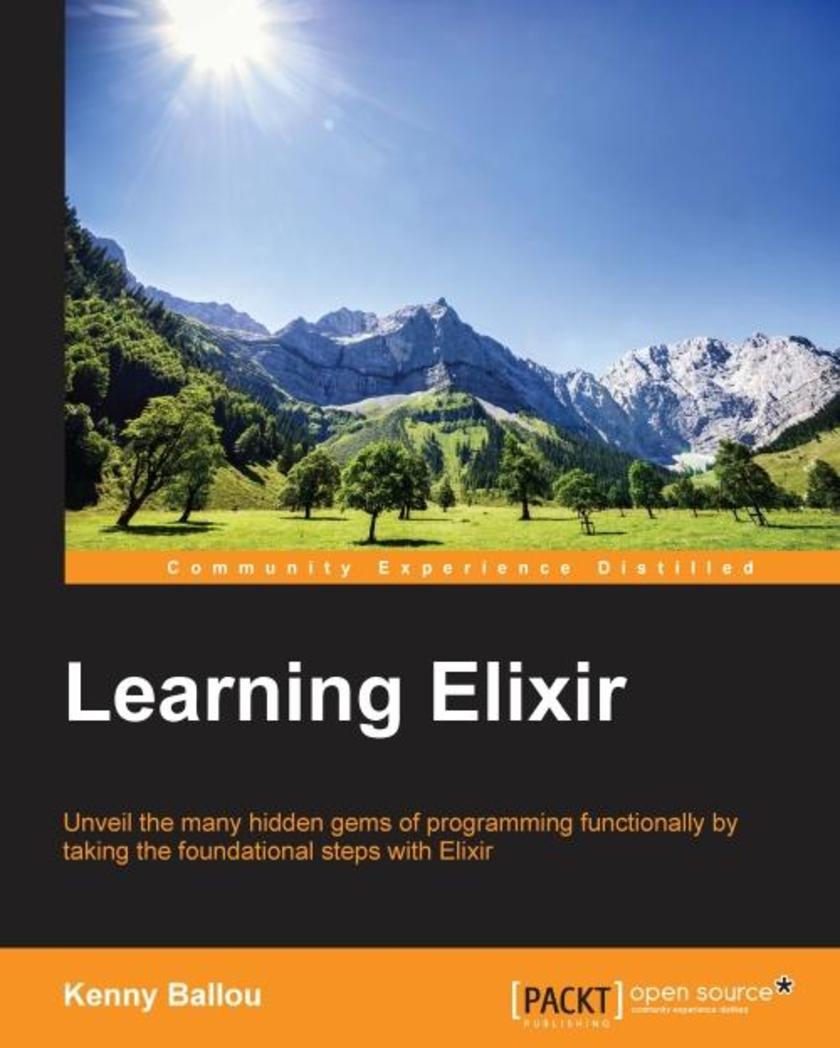
Learning Elixir
¥63.21
Unveil many hidden gems of programming functionally by taking the foundational steps with ElixirAbout This BookExplore the functional paradigms of programming with Elixir through use of helpful examplesConcise step-by-step instructions to teach you difficult technical conceptsBridge the gap between functional programming and ElixirWho This Book Is ForThis book targets developers new to Elixir, as well as Erlang, in order to make them feel comfortable in functional programming with Elixir, thus enabling them to develop more scalable and fault-tolerant applications.Although no knowledge of Elixir is assumed, some programming experience with mainstream Object-Oriented programming languages such a Ruby, Python, Java, C# would be beneficial.What You Will LearnExplore Elixir to create resilient, scalable applicationsCreate fault-tolerant applicationsBecome better acquainted with Elixir code and see how it is structured to build and develop functional programsLearn the basics of functional programmingGain an understanding of effective OTP principlesDesign program-distributed applications and systemsWrite and create branching statements in ElixirLearn to do more with less using Elixir's metaprogrammingBe familiar with the facilities Elixir provides for metaprogramming, macros, and extending the Elixir languageIn DetailElixir, based on Erlang’s virtual machine and ecosystem, makes it easier to achieve scalability, concurrency, fault tolerance, and high availability goals that are pursued by developers using any programming language or programming paradigm. Elixir is a modern programming language that utilizes the benefits offered by Erlang VM without really incorporating the complex syntaxes of Erlang.Learning to program using Elixir will teach many things that are very beneficial to programming as a craft, even if at the end of the day, the programmer isn't using Elixir. This book will teach you concepts and principles important to any complex, scalable, and resilient application. Mostly, applications are historically difficult to reason about, but using the concepts in this book, they will become easy and enjoyable. It will teach you the functional programing ropes, to enable them to create better and more scalable applications, and you will explore how Elixir can help you achieve new programming heights. You will also glean a firm understanding of basics of OTP and the available generic, provided functionality for creating resilient complex systems. Furthermore, you will learn the basics of metaprogramming: modifying and extending Elixir to suite your needs.Style and approach An exploration of functional programming and Elixir with easy to follow examples using Elixir and the functional style. All the topics, concepts, and principles covered are clearly and concisely explained with either code examples or in depth discussions, or both!
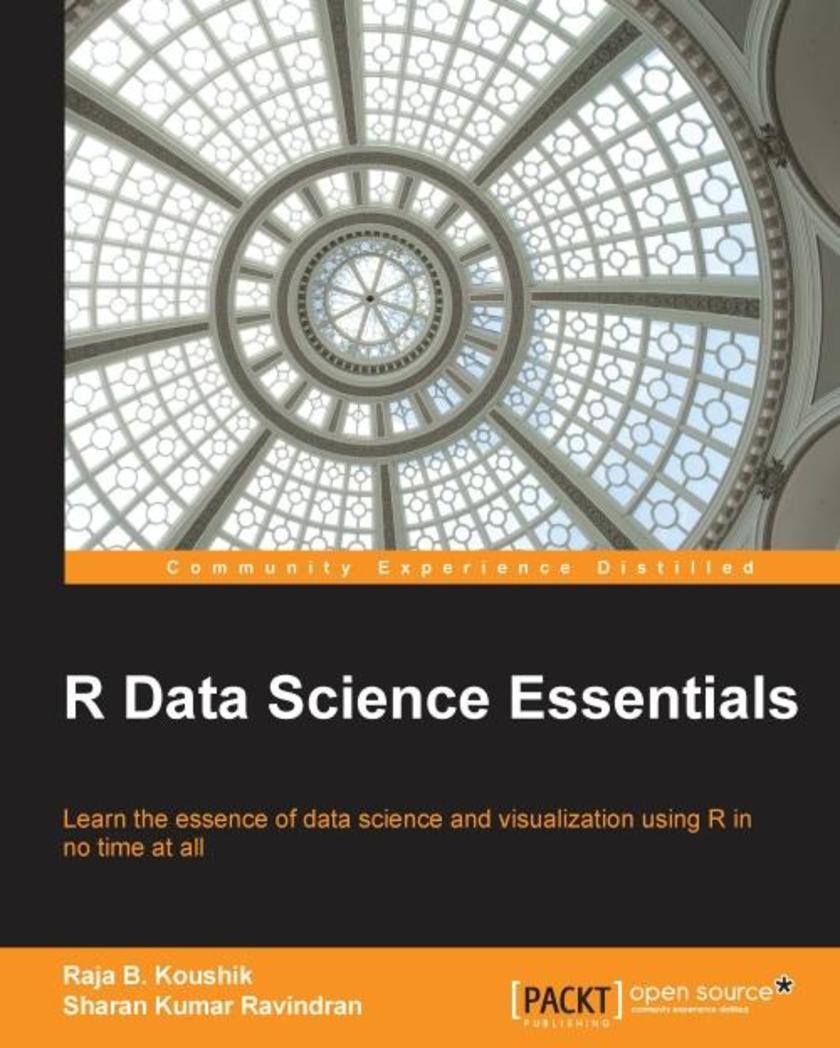
R Data Science Essentials
¥63.21
Learn the essence of data science and visualization using R in no time at allAbout This BookBecome a pro at making stunning visualizations and dashboards quickly and without hassleFor better decision making in business, apply the R programming language with the help of useful statistical techniques.From seasoned authors comes a book that offers you a plethora of fast-paced techniques to detect and analyze data patternsWho This Book Is ForIf you are an aspiring data scientist or analyst who has a basic understanding of data science and has basic hands-on experience in R or any other analytics tool, then R Data Science Essentials is the book for you.What You Will LearnPerform data preprocessing and basic operations on dataImplement visual and non-visual implementation data exploration techniquesMine patterns from data using affinity and sequential analysisUse different clustering algorithms and visualize themImplement logistic and linear regression and find out how to evaluate and improve the performance of an algorithmExtract patterns through visualization and build a forecasting algorithmBuild a recommendation engine using different collaborative filtering algorithmsMake a stunning visualization and dashboard using ggplot and R shinyIn DetailWith organizations increasingly embedding data science across their enterprise and with management becoming more data-driven it is an urgent requirement for analysts and managers to understand the key concept of data science. The data science concepts discussed in this book will help you make key decisions and solve the complex problems you will inevitably face in this new world.R Data Science Essentials will introduce you to various important concepts in the field of data science using R. We start by reading data from multiple sources, then move on to processing the data, extracting hidden patterns, building predictive and forecasting models, building a recommendation engine, and communicating to the user through stunning visualizations and dashboards.By the end of this book, you will have an understanding of some very important techniques in data science, be able to implement them using R, understand and interpret the outcomes, and know how they helps businesses make a decision.Style and approachThis easy-to-follow guide contains hands-on examples of the concepts of data science using R.
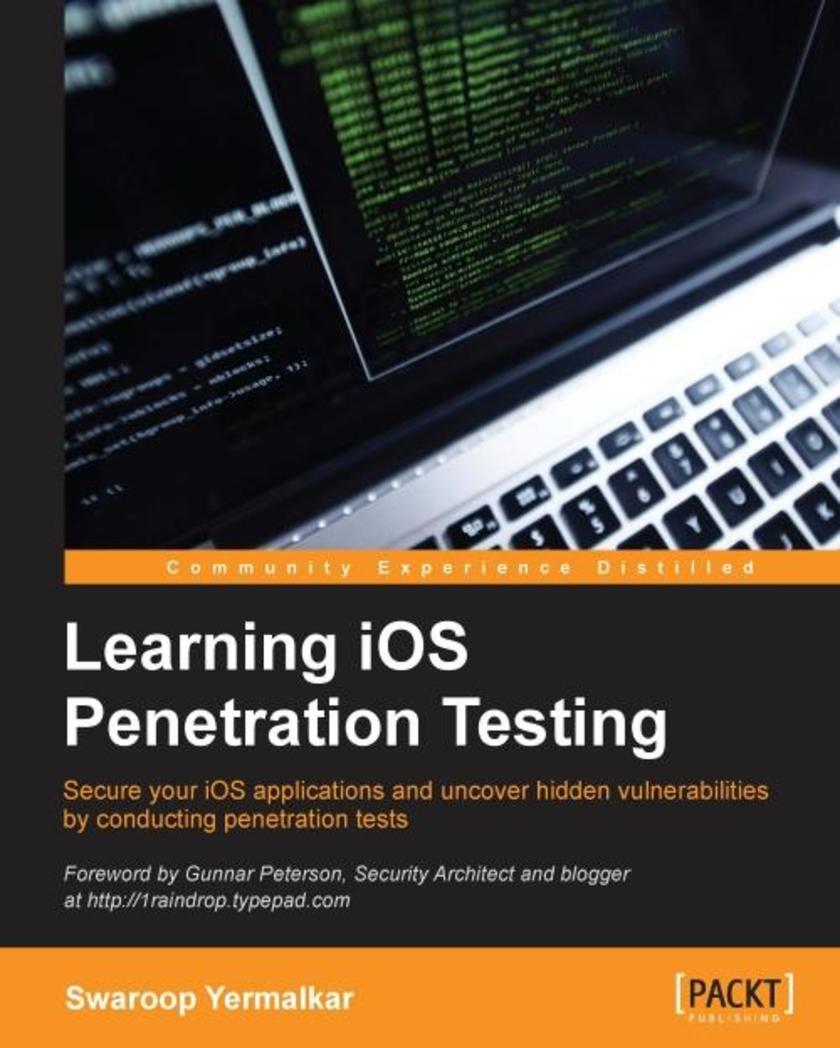
Learning iOS Penetration Testing
¥71.93
Secure your iOS applications and uncover hidden vulnerabilities by conducting penetration testsAbout This BookAchieve your goal to secure iOS devices and applications with the help of this fast paced manualFind vulnerabilities in your iOS applications and fix them with the help of this example-driven guideAcquire the key skills that will easily help you to perform iOS exploitation and forensics with greater confidence and a stronger understandingWho This Book Is ForThis book is for IT security professionals who want to conduct security testing of applications. This book will give you exposure to diverse tools to perform penetration testing. This book will also appeal to iOS developers who would like to secure their applications, as well as security professionals. It is easy to follow for anyone without experience of iOS pentesting.What You Will LearnUnderstand the basics of iOS app development, deployment, security architecture, application signing, application sandboxing, and OWASP TOP 10 for mobileSet up your lab for iOS app pentesting and identify sensitive information stored locallyPerform traffic analysis of iOS devices and catch sensitive data being leaked by side channelsModify an application’s behavior using runtime analysisAnalyze an application’s binary for security protectionAcquire the knowledge required for exploiting iOS devicesLearn the basics of iOS forensicsIn DetailiOS has become one of the most popular mobile operating systems with more than 1.4 million apps available in the iOS App Store. Some security weaknesses in any of these applications or on the system could mean that an attacker can get access to the device and retrieve sensitive information. This book will show you how to conduct a wide range of penetration tests on iOS devices to uncover vulnerabilities and strengthen the system from attacks.Learning iOS Penetration Testing discusses the common vulnerabilities and security-related shortcomings in an iOS application and operating system, and will teach you to conduct static and dynamic analysis of iOS applications.This practical guide will help you uncover vulnerabilities in iOS phones and applications. We begin with basics of iOS security and dig deep to learn about traffic analysis, code analysis, and various other techniques. Later, we discuss the various utilities, and the process of reversing and auditing.Style and approachThis fast-paced and practical guide takes a step-by-step approach to penetration testing with the goal of helping you secure your iOS devices and apps quickly.
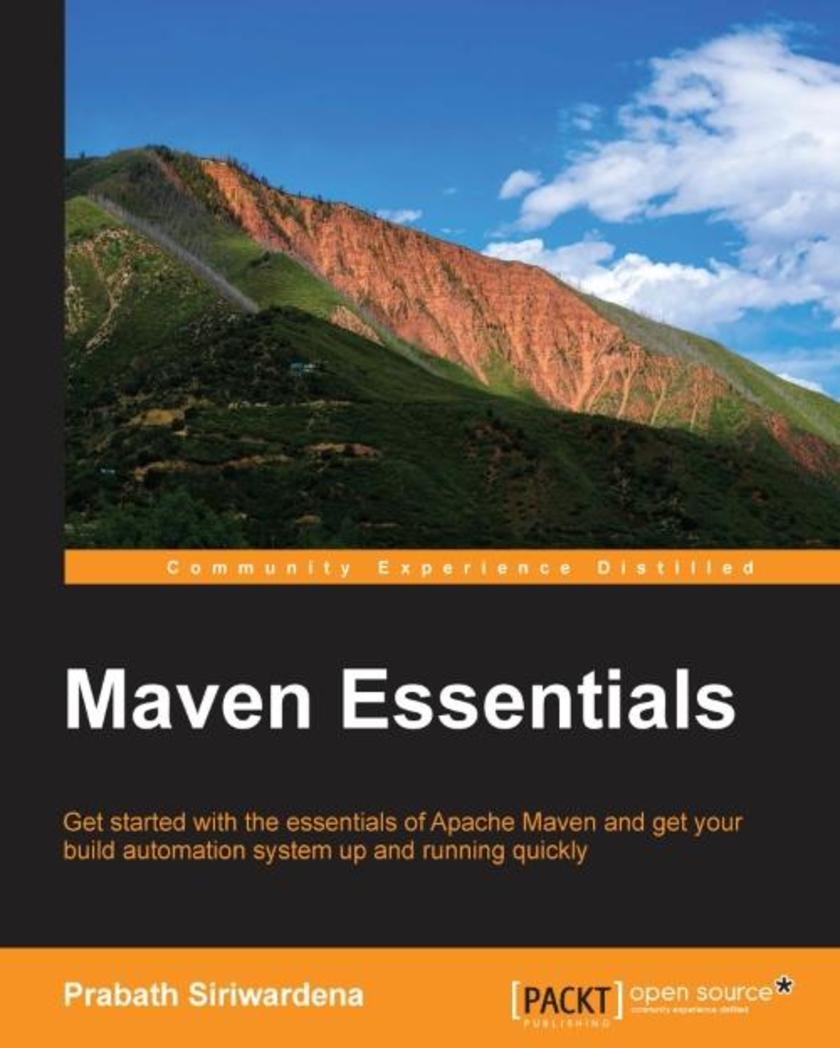
Maven Essentials
¥45.77
Get started with the essentials of Apache Maven and get your build automation system up and running quickly About This Book Explore the essentials of Apache Maven essentials to arm yourself with all the ingredients needed to develop a comprehensive build automation system Identify the extension points in Apache Maven and learn more about them in-depth Improve developer productivity by optimizing the build process with best practices in Maven using this compact guide Who This Book Is For The book is ideal for for experienced developers who are already familiar with build automation, but want to learn how to use Maven and apply its concepts to the most difficult scenarios in build automation. What You Will Learn Comprehend the key concepts in Apache Maven Build your own custom plugins and get to know how Maven extension points are used Troubleshoot build issues with greater confidence Optimize Maven’s configuration settings Write custom lifecycles and extensions Get hands-on and create a Maven assembly Explore the best practices to design a build system that improves developer productivity In Detail Maven is the #1 build tool used by developers and it has been around for more than a decade. Maven stands out among other build tools due to its extremely extensible architecture, which is built on of the concept of convention over configuration. It’s widely used by many open source Java projects under Apache Software Foundation, Sourceforge, Google Code, and more. Maven Essentials is a fast-paced guide to show you the key concepts in Maven and build automation. We get started by introducing you to Maven and exploring its core concepts and architecture. Next, you will learn about and write a Project Object Model (POM) while creating your own Maven project. You will also find out how to create custom archetypes and plugins to establish the most common goals in build automation. After this, you’ll get to know how to design the build to prevent any maintenance nightmares, with proper dependency management. We then explore Maven build lifecycles and Maven assemblies. Finally, you will discover how to apply the best practices when designing a build system to improve developer productivity. Style and approach This book is a practical and compact guide that will show you how to use Apache Maven in an optimal way to address enterprise build requirements. It provides technical guidance to get you started with Maven and build automation.
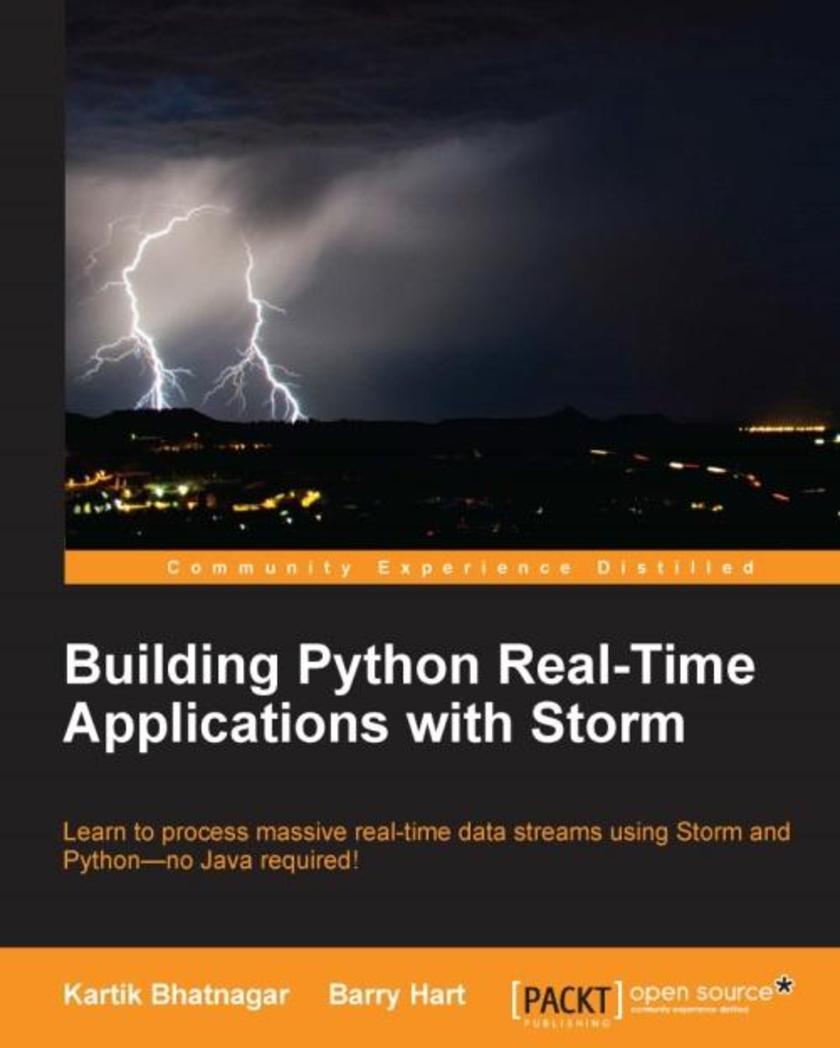
Building Python Real-Time Applications with Storm
¥54.49
Learn to process massive real-time data streams using Storm and Python—no Java required!About This Book Learn to use Apache Storm and the Python Petrel library to build distributed applications that process large streams of data Explore sample applications in real-time and analyze them in the popular NoSQL databases MongoDB and Redis Discover how to apply software development best practices to improve performance, productivity, and quality in your Storm projects Who This Book Is For This book is intended for Python developers who want to benefit from Storm’s real-time data processing capabilities. If you are new to Python, you’ll benefit from the attention to key supporting tools and techniques such as automated testing, virtual environments, and logging. If you’re an experienced Python developer, you’ll appreciate the thorough and detailed examples What You Will Learn Install Storm and learn about the prerequisites Get to know the components of a Storm topology and how to control the flow of data between them Ingest Twitter data directly into Storm Use Storm with MongoDB and Redis Build topologies and run them in Storm Use an interactive graphical debugger to debug your topology as it’s running in Storm Test your topology components outside of Storm Configure your topology using YAML In Detail Big data is a trending concept that everyone wants to learn about. With its ability to process all kinds of data in real time, Storm is an important addition to your big data “bag of tricks.” At the same time, Python is one of the fastest-growing programming languages today. It has become a top choice for both data science and everyday application development. Together, Storm and Python enable you to build and deploy real-time big data applications quickly and easily. You will begin with some basic command tutorials to set up storm and learn about its configurations in detail. You will then go through the requirement scenarios to create a Storm cluster. Next, you’ll be provided with an overview of Petrel, followed by an example of Twitter topology and persistence using Redis and MongoDB. Finally, you will build a production-quality Storm topology using development best practices. Style and approach This book takes an easy-to-follow and a practical approach to help you understand all the concepts related to Storm and Python.

Android 6 Essentials
¥54.49
Design, build, and create your own applications using the full range of features available in Android 6 About This Book Learn how to utilize the robust features of Android 6 to design, develop, and publish better Android applications Get useful guidance on creating new apps or migrating existing apps to support features such as app permissions, app links, fingerprint authentication, etc A fast paced guide, packed with hands-on examples that ties all the features such as API, audio, video, camera, tab customization together under a single cover Who This Book Is For This book is for Android developers who are looking to move their applications into the next Android version with ease. What You Will Learn Familiarize yourself with the features of Android 6 Code with the new Android permissions model Use apps auto backup and restore lost data automatically Increase user engagement with apps through an assistant using triggers and providing contextual assistance Assess and handle proper usage of the API Work with Audio, Video,Camera in Android 6 Utilize the new features in Android for professional purposes Understand and code Chrome’s custom tabs In Detail Android 6 is the latest and greatest version of the Android operating system, and comes packed with cutting edge new features for you to harness for the benefit of building better applications. This step-by-step guide will take you through the basics of the Android Marshmallow permissions model and beyond into other crucial areas such as the Audio,Video,Camera API and Android’s at work features. Learn how to create, deploy, and manage Android applications with Marshmallow’s API and the latest functionalities. The combination of instructions and real-world examples will make your application deployment and testing a breeze. Style and approach This easy-to-follow, step-by-step tutorial provides explanations and examples to add the new Android 6 features to your skill set. Each chapter provides sequential steps and detailed information about the API, as well as best practices and testing options.
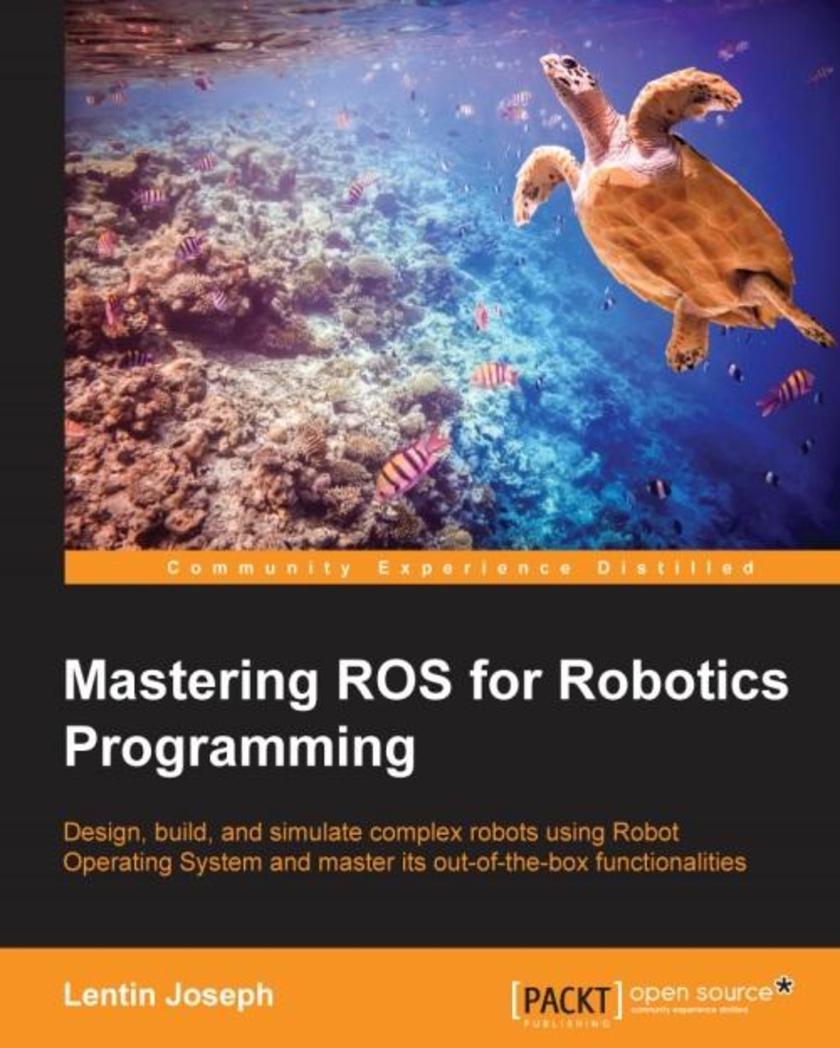
Mastering ROS for Robotics Programming
¥99.18
Design, build and simulate complex robots using Robot Operating System and master its out-of-the-box functionalities About This Book Develop complex robotic applications using ROS for interfacing robot manipulators and mobile robots with the help of high end robotic sensors Gain insights into autonomous navigation in mobile robot and motion planning in robot manipulators Discover the best practices and troubleshooting solutions everyone needs when working on ROS Who This Book Is For If you are a robotics enthusiast or researcher who wants to learn more about building robot applications using ROS, this book is for you. In order to learn from this book, you should have a basic knowledge of ROS, GNU/Linux, and C++ programming concepts. The book will also be good for programmers who want to explore the advanced features of ROS. What You Will Learn Create a robot model of a Seven-DOF robotic arm and a differential wheeled mobile robot Work with motion planning of a Seven-DOF arm using MoveIt! Implement autonomous navigation in differential drive robots using SLAM and AMCL packages in ROS Dig deep into the ROS Pluginlib, ROS nodelets, and Gazebo plugins Interface I/O boards such as Arduino, Robot sensors, and High end actuators with ROS Simulation and motion planning of ABB and Universal arm using ROS Industrial Explore the ROS framework using its latest version In Detail The area of robotics is gaining huge momentum among corporate people, researchers, hobbyists, and students. The major challenge in robotics is its controlling software. The Robot Operating System (ROS) is a modular software platform to develop generic robotic applications.This book discusses the advanced concepts in robotics and how to program using ROS. It starts with deep overview of the ROS framework, which will give you a clear idea of how ROS really works. During the course of the book, you will learn how to build models of complex robots, and simulate and interface the robot using the ROS MoveIt motion planning library and ROS navigation stacks.After discussing robot manipulation and navigation in robots, you will get to grips with the interfacing I/O boards, sensors, and actuators of ROS. One of the essential ingredients of robots are vision sensors, and an entire chapter is dedicated to the vision sensor, its interfacing in ROS, and its programming.You will discuss the hardware interfacing and simulation of complex robot to ROS and ROS Industrial (Package used for interfacing industrial robots).Finally, you will get to know the best practices to follow when programming using ROS.Style and approach This is a simplified guide to help you learn and master advanced topics in ROS using hands-on examples.

SQL Server 2014 with PowerShell v5 Cookbook
¥107.90
Over 150 real-world recipes to simplify database management, automate repetitive tasks, and enhance your productivity About This Book This book helps you build a strong foundation to get you comfortable using PowerShell with SQL Server, empowering you to create more complex *s for your day-to-day job The book provides numerous guidelines, tips, and explanations on how and when to use PowerShell cmdlets, WMI, SMO, .NET classes, or other components It offers easy-to-follow, practical recipes to help you get the most out of SQL Server and PowerShell Who This Book Is For If you are a SQL Server database professional (DBA, developer, or BI developer) who wants to use PowerShell to automate, integrate, and simplify database tasks, this books is for you. Prior knowledge of *ing would be helpful, but it is not necessary. What You Will Learn Explore database objects and execute queries on multiple servers Manage and monitor the running of SQL Server services and accounts Back up and restore databases Create an inventory of database properties and server configuration settings Maintain permissions and security for users Work with CLR assemblies, XML, and BLOB objects in SQL Manage and deploy SSIS packages and SSRS reports In Detail PowerShell can be leveraged when automating and streamlining SQL Server tasks. PowerShell comes with a rich set of cmdlets, and integrates tightly with the .NET framework. Its *ing capabilities are robust and flexible, allowing you to simplify automation and integration across different Microsoft applications and components. The book starts with an introduction to the new features in SQL Server 2014 and PowerShell v5 and the installation of SQL Server. You will learn about basic SQL Server administration tasks and then get to know about some security-related topics such as the authentication mode and assigning permissions. Moving on, you will explore different methods to back up and restore your databases and perform advanced administration tasks such as working with Policies, Filetables, and SQL audits. The next part of the book covers more advanced HADR tasks such as log shipping and data mirroring, and then shows you how to develop your server to work with BLOB, XML, and JSON. Following on from that, you will learn about SQL Server's BI stack, which includes SSRS reports, the SSIS package, and the SSAS cmdlet and database. Snippets not specific to SQL Server will help you perform tasks quickly on SQL servers. Towards the end of the book, you will find some useful information, which includes a PowerShell tutorial for novice users, some commonly-used PowerShell and SQL Server syntax, and a few online resources. Finally, you will create your own SQL Server Sandbox VMs. All these concepts will help you to efficiently manage your administration tasks. Style and approach SQL Server 2014 with PowerShell v5 Cookbook is an example-focused book that provides step-by-step instructions on how to accomplish specific SQL Server tasks using PowerShell. Each recipe is followed by an analysis of the steps or design decisions taken and additional information about the task at hand. Working *s are provided for all examples so that you can dive in right away. You can read this book sequentially by chapter or you can pick and choose which topics you need right away.
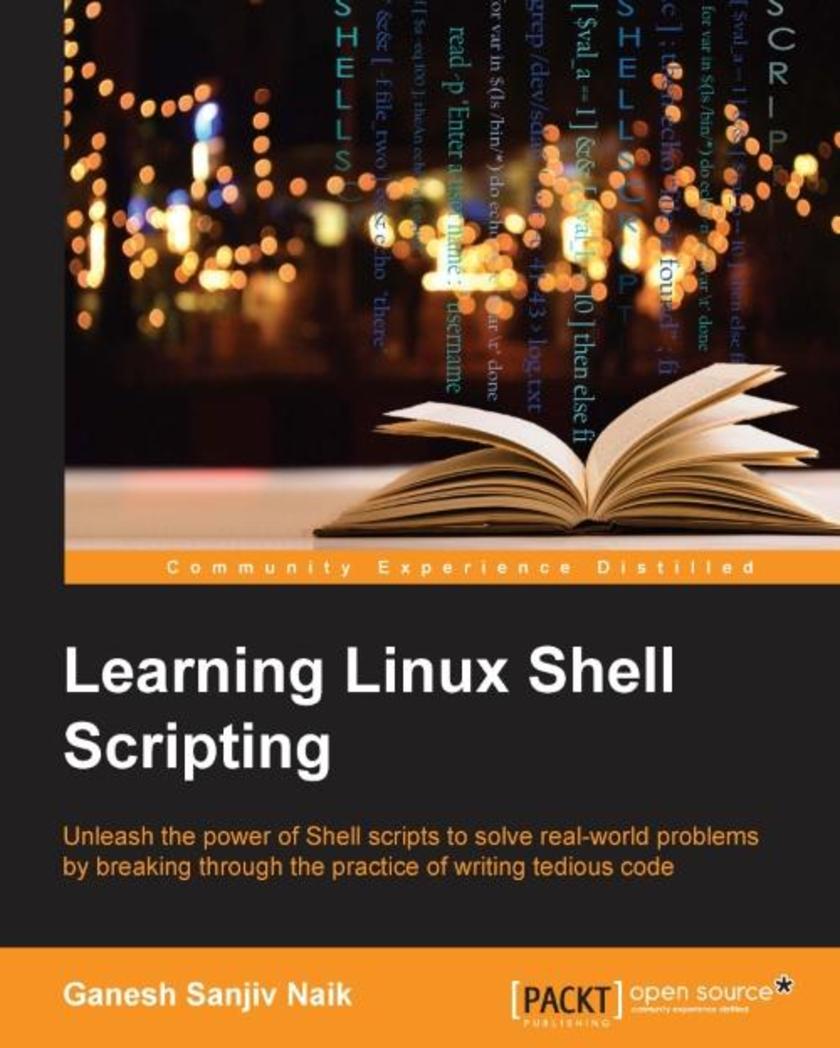
Learning Linux Shell Scripting
¥90.46
Unleash the power of shell *s to solve real-world problems by breaking through the practice of writing tedious code About This Book Learn how to efficiently and effectively build shell *s and develop advanced applications with this handy book Develop high quality and efficient solutions by writing professional and real-world *s, and debug *s by checking and shell tracing A step-by-step tutorial to automate routine tasks by developing *s from a basic level to very advanced functionality Who This Book Is For This book is ideal for those who are proficient at working with Linux and who want to learn about shell *ing to improve their efficiency and practical skills. By the end of this book, you will be able to confidently use your own shell *s in the real world. What You Will Learn Familiarize yourself with the various text filtering tools available in Linux Combine the fundamental text and file processing commands to process data and automate repetitive tasks Understand expressions and variables and how to use them practically Automate decision-making and save a lot of time and effort of revisiting code Get to grips with advanced functionality such as using traps and signals and using dialogs to develop screens Start up a system and customize a Linux system Take an in-depth look at regular expressions and pattern matching to understand the capabilities of *ing In Detail Linux is the one of the most powerful and universally adopted OSes. Shell is a program that gives the user direct interaction with the operating system. Scripts are collections of commands that are stored in a file. The shell can read this file and act on the commands as if they were typed on the keyboard. Shell *ing is used to automate day-to-day administration, and for testing or product development tasks.This book covers Bash, GNU Bourne Again SHell, preparing you to work in the exciting world of Linux shell *ing. We start with an introduction to the Shell environment and explain basic commands used in Shell. Next we move on to check, kill, and control the execution of processes in Linux OS. Further, we teach you about the filter tools available in Linux and explain standard output and standard errors devices.Then we will ensure you understand Shell’s interpretation of commands and get a firmer grasp so you use them in practice. Next, you’ll experience some real-world essentials such as debugging and perform Shell arithmetic fluently. Then you’ll take a step ahead and learn new and advanced topics in Shell *ing, such as starting up a system and customizing a Linux system. Finally, you’ll get to understand the capabilities of *ing and learn about Grep, Stream Editor, and Awk.Style and approach This practical book will go from the very basics of shell *ing to complex, customized automation. The idea behind this book is to be as practical as possible and give you the look and feel of what real-world *ing is like.
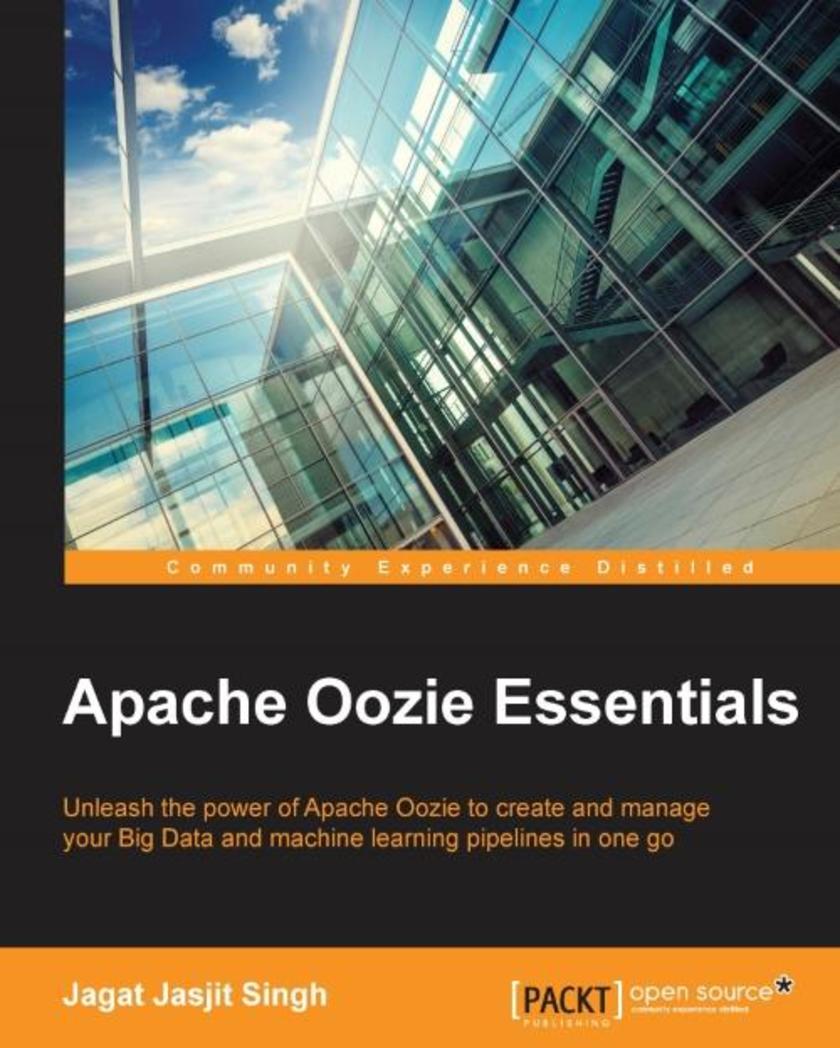
Apache Oozie Essentials
¥63.21
Unleash the power of Apache Oozie to create and manage your big data and machine learning pipelines in one go About This Book Teaches you everything you need to know to get started with Apache Oozie from scratch and manage your data pipelines effortlessly Learn to write data ingestion workflows with the help of real-life examples from the author’s own personal experience Embed Spark jobs to run your machine learning models on top of Hadoop Who This Book Is For If you are an expert Hadoop user who wants to use Apache Oozie to handle workflows efficiently, this book is for you. This book will be handy to anyone who is familiar with the basics of Hadoop and wants to automate data and machine learning pipelines. What You Will Learn Install and configure Oozie from source code on your Hadoop cluster Dive into the world of Oozie with Java MapReduce jobs Schedule Hive ETL and data ingestion jobs >Import data from a database through Sqoop jobs in HDFS Create and process data pipelines with Pig, hive *s as per business requirements. Run machine learning Spark jobs on Hadoop Create quick Oozie jobs using Hue Make the most of Oozie’s security capabilities by configuring Oozie’s security In Detail As more and more organizations are discovering the use of big data analytics, interest in platforms that provide storage, computation, and analytic capabilities is booming exponentially. This calls for data management. Hadoop caters to this need. Oozie fulfils this necessity for a scheduler for a Hadoop job by acting as a cron to better analyze data. Apache Oozie Essentials starts off with the basics right from installing and configuring Oozie from source code on your Hadoop cluster to managing your complex clusters. You will learn how to create data ingestion and machine learning workflows. This book is sprinkled with the examples and exercises to help you take your big data learning to the next level. You will discover how to write workflows to run your MapReduce, Pig ,Hive, and Sqoop *s and schedule them to run at a specific time or for a specific business requirement using a coordinator. This book has engaging real-life exercises and examples to get you in the thick of things. Lastly, you’ll get a grip of how to embed Spark jobs, which can be used to run your machine learning models on Hadoop. By the end of the book, you will have a good knowledge of Apache Oozie. You will be capable of using Oozie to handle large Hadoop workflows and even improve the availability of your Hadoop environment. Style and approach This book is a hands-on guide that explains Oozie using real-world examples. Each chapter is blended beautifully with fundamental concepts sprinkled in-between case study solution algorithms and topped off with self-learning exercises.
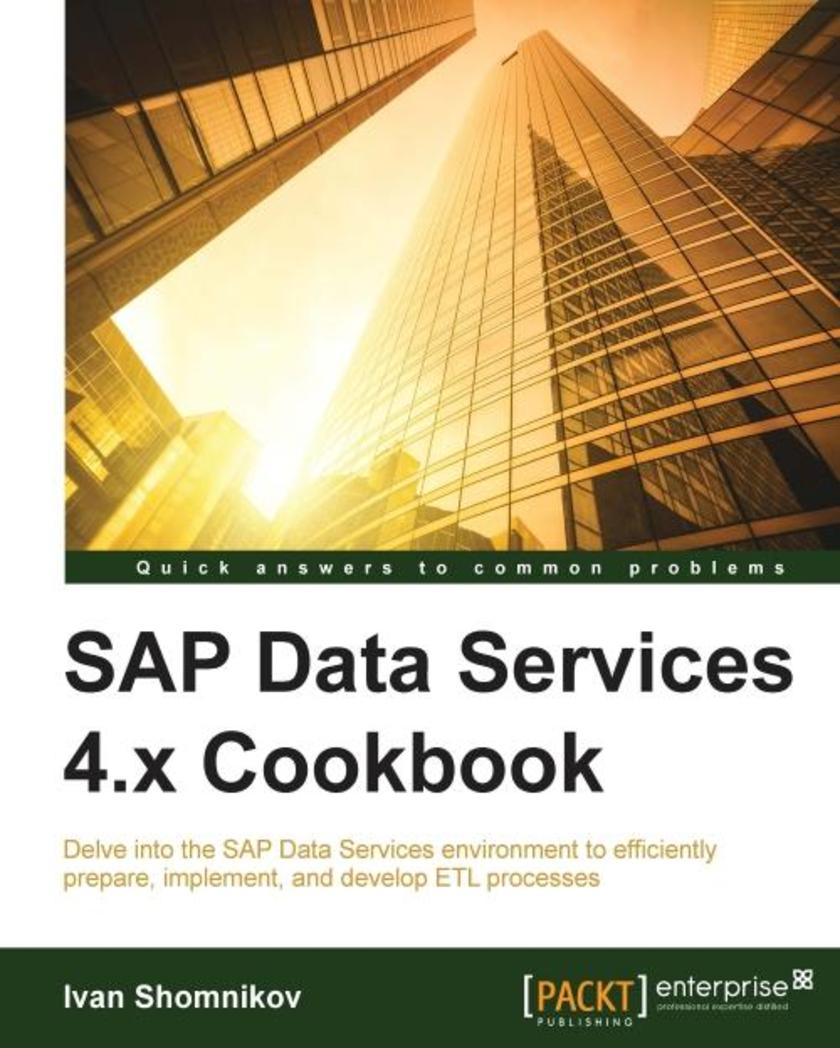
SAP Data Services 4.x Cookbook
¥107.90
Delve into the SAP Data Services environment to efficiently prepare, implement, and develop ETL processes About This Book Install and configure the SAP Data Services environment Develop ETL techniques in the Data Services environment Implement real-life examples of Data Services uses through step-by-step instructions to perform specific ETL development tasks Who This Book Is For This book is for IT technical engineers who want to get familiar with the EIM solutions provided by SAP for ETL development and data quality management. The book requires familiarity with basic programming concepts and basic knowledge of the SQL language. What You Will Learn Install, configure, and administer the SAP Data Services components Run through the ETL design basics Maximize the performance of your ETL with the advanced patterns in Data Services Extract methods from various databases and systems Get familiar with the transformation methods available in SAP Data Services Load methods into various databases and systems Code with the Data Services *ing language Validate and cleanse your data, applying the Data quality methods of the Information Steward In Detail Want to cost effectively deliver trusted information to all of your crucial business functionsSAP Data Services delivers one enterprise-class solution for data integration, data quality, data profiling, and text data processing. It boosts productivity with a single solution for data quality and data integration. SAP Data Services also enables you to move, improve, govern, and unlock big data. This book will lead you through the SAP Data Services environment to efficiently develop ETL processes. To begin with, you’ll learn to install, configure, and prepare the ETL development environment. You will get familiarized with the concepts of developing ETL processes with SAP Data Services. Starting from smallest unit of work- the data flow, the chapters will lead you to the highest organizational unit—the Data Services job, revealing the advanced techniques of ETL design.You will learn to import XML files by creating and implementing real-time jobs. It will then guide you through the ETL development patterns that enable the most effective performance when extracting, transforming, and loading data. You will also find out how to create validation functions and transforms.Finally, the book will show you the benefits of data quality management with the help of another SAP solution—Information Steward.Style and approach This book is an easy-to-follow guide with step-by-step instructions to perform specific ETL development tasks.
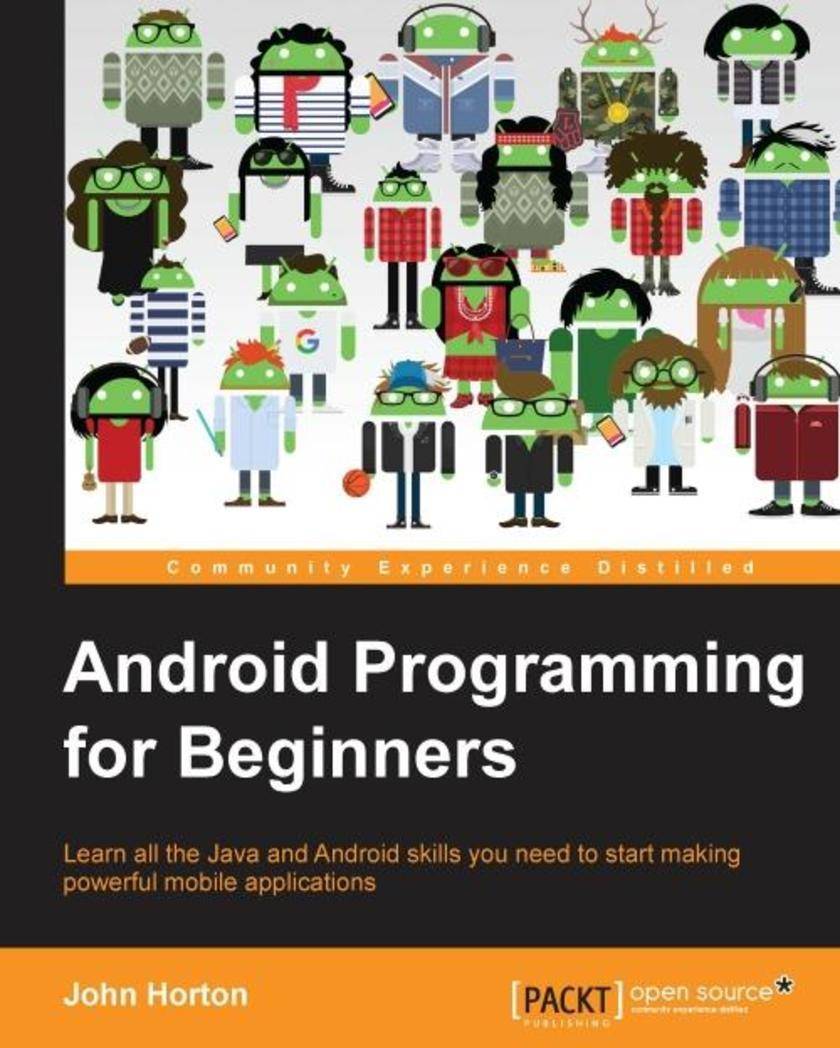
Android Programming for Beginners
¥90.46
Learn all the Java and Android skills you need to start making powerful mobile applications About This Book Kick-start your Android programming career, or just have fun publishing apps to the Google Play marketplace A first-principles introduction to Java, via Android, which means you’ll be able to start building your own applications from scratch Learn by example and build three real-world apps and over 40 mini apps throughout the book Who This Book Is For Are you trying to start a career in programming, but haven’t found the right way inDo you have a great idea for an app, but don’t know how to make it a realityOr maybe you’re just frustrated that “to learn Android, you must know java.” If so, Android Programming for Beginners is for you. You don’t need any programming experience to follow along with this book, just a computer and a sense of adventure. What You Will Learn Master the fundamentals of coding Java for Android Install and set up your Android development environment Build functional user interfaces with the Android Studio visual designer Add user interaction, data captures, sound, and animation to your apps Manage your apps’ data using the built-in Android SQLite database Find out about the design patterns used by professionals to make top-grade applications Build, deploy, and publish real Android applications to the Google Play marketplace In Detail Android is the most popular OS in the world. There are millions of devices accessing tens of thousands of applications. It is many people's entry point into the world of technology; it is an operating system for everyone. Despite this, the entry-fee to actually make Android applications is usually a computer science degree, or five years’ worth of Java experience. Android Programming for Beginners will be your companion to create Android applications from scratch—whether you’re looking to start your programming career, make an application for work, be reintroduced to mobile development, or are just looking to program for fun. We will introduce you to all the fundamental concepts of programming in an Android context, from the Java basics to working with the Android API. All examples are created from within Android Studio, the official Android development environment that helps supercharge your application development process. After this crash-course, we’ll dive deeper into Android programming and you’ll learn how to create applications with a professional-standard UI through fragments, make location-aware apps with Google Maps integration, and store your user’s data with SQLite. In addition, you’ll see how to make your apps multilingual, capture images from a device’s camera, and work with graphics, sound, and animations too. By the end of this book, you’ll be ready to start building your own custom applications in Android and Java. Style and approach With more than 40 mini apps to code and run, Android Programming for Beginners is a hands-on guide to learning Android and Java. Each example application demonstrates a different aspect of Android programming. Alongside these mini apps, we push your abilities by building three larger applications to demonstrate Android application development in context.
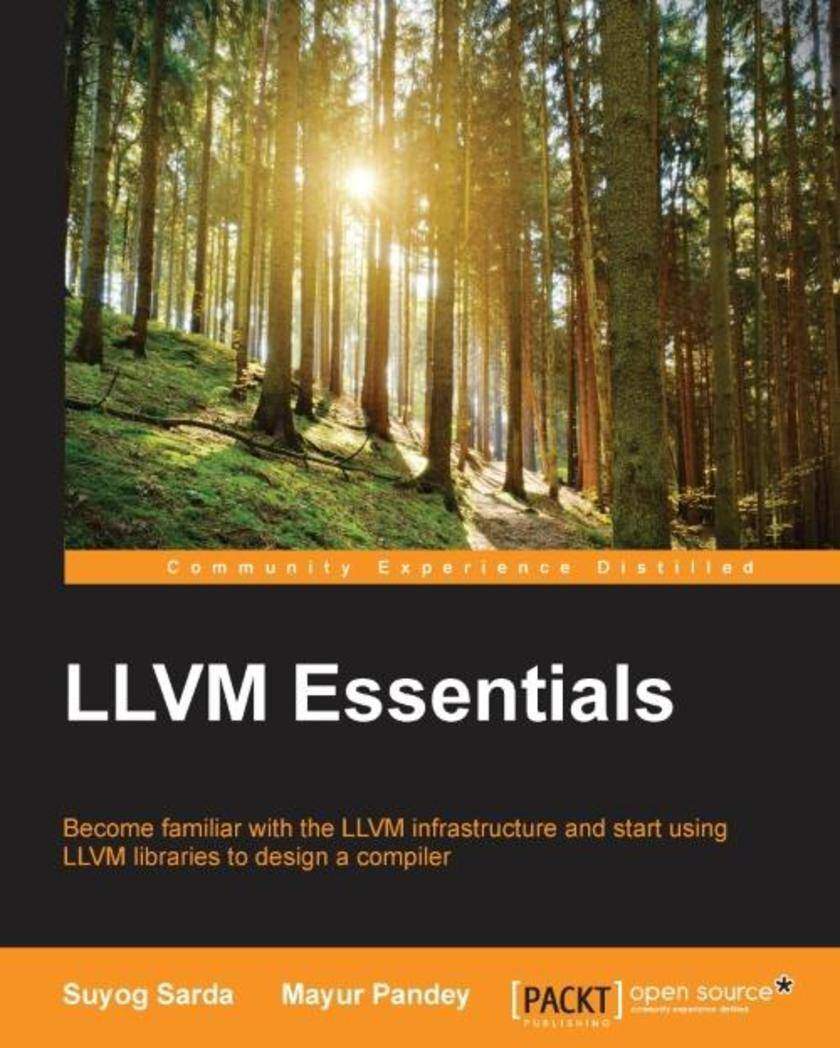
LLVM Essentials
¥45.77
Become familiar with the LLVM infrastructure and start using LLVM libraries to design a compiler About This Book Learn to use the LLVM libraries to emit intermediate representation (IR) from high-level language Build your own optimization pass for better code generation Understand AST generation and use it in a meaningful way Who This Book Is For This book is intended for those who already know some of the concepts of compilers and want to quickly get familiar with the LLVM infrastructure and the rich set of libraries that it provides. What You Will Learn Get an introduction to LLVM modular design and LLVM tools Convert frontend code to LLVM IR Implement advanced LLVM IR paradigms Understand the LLVM IR Optimization Pass Manager infrastructure and write an optimization pass Absorb LLVM IR transformations Understand the steps involved in converting LLVM IR to Selection DAG Implement a custom target using the LLVM infrastructure Get a grasp of C’s frontend clang, an AST dump, and static analysis In Detail LLVM is currently the point of interest for many firms, and has a very active open source community. It provides us with a compiler infrastructure that can be used to write a compiler for a language. It provides us with a set of reusable libraries that can be used to optimize code, and a target-independent code generator to generate code for different backends. It also provides us with a lot of other utility tools that can be easily integrated into compiler projects. This book details how you can use the LLVM compiler infrastructure libraries effectively, and will enable you to design your own custom compiler with LLVM in a snap. We start with the basics, where you’ll get to know all about LLVM. We then cover how you can use LLVM library calls to emit intermediate representation (IR) of simple and complex high-level language paradigms. Moving on, we show you how to implement optimizations at different levels, write an optimization pass, generate code that is independent of a target, and then map the code generated to a backend. The book also walks you through CLANG, IR to IR transformations, advanced IR block transformations, and target machines. By the end of this book, you’ll be able to easily utilize the LLVM libraries in your own projects. Style and approach This book deals with topics sequentially, increasing the difficulty level in a step-by-step approach. Each topic is explained with a detailed example, and screenshots are included to help you understand the examples.
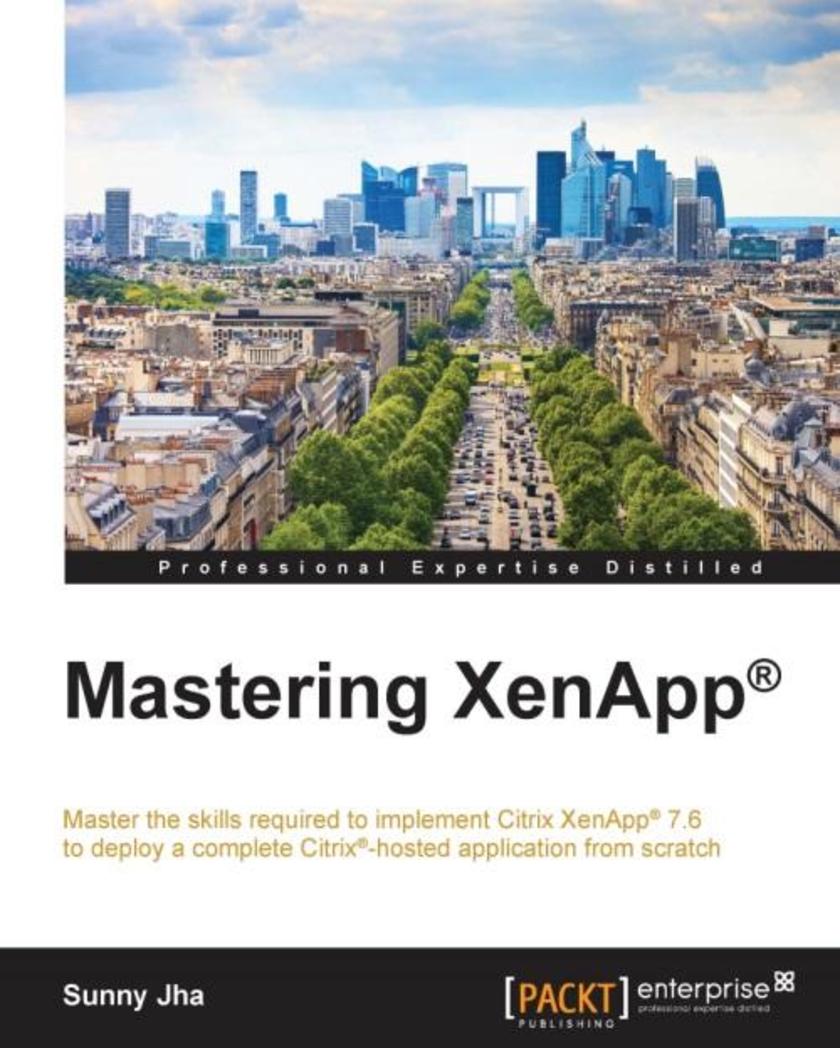
Mastering XenApp?
¥99.18
Master the skills required to implement CitrixXenApp7.6 to deploy a complete Citrix?-hosted application from scratch About This Book Learn to implement and configure components of CitrixXenApp7.6, which are XenServer?, XenApp?, CitrixLicense server, PVS, Storefront, CitrixReceiver, and Netscaler to secure WAN traffic Build the XenApp7.6 environment independently and perform tests to make sure the components are working as expected for internal and external traffic Implement advanced tools in CitrixXenAppto build and manage a cost effective, secure, and high-performing application delivery infrastructure with this comprehensive guide Who This Book Is For This is book is for administrators who are currently managing the implemented environment and want to learn how to deploy the CitrixHosted virtualization solution for the application in a windows server 2012 R2 environment. A reasonable knowledge and understanding of core XenAppelements and concepts used during virtualizing applications are assumed. What You Will Learn Understand how to set up Hypervisor, install the management console, configure the storage repository, and create a virtual machine on hypervisor Set up an Infrastructure component and explore ways to tune them up so that they can be used for Citrixenvironment Set up a Domain controller, DHCP, Certificate authority, and SQL server for static database for CitrixXenAppValidate the CitrixXenApp7.6 solution to make sure components are communicating properly Manage the essential Citrixcomponents – Director, Licensing, and Policies with the Help of Citrixstudio Optimize the behavior of an Application and share desktop via Policies Installing and configuring CitrixProvisioning services to deliver CitrixXenApp7.6 virtual machines Secure the external Delivery of an application and shared desktop via netscaler to enjoy mobility In Detail CitrixXenAppis one of the leading pieces of Application delivery software that delivers Windows compatible apps to users on any device, anywhere. CitrixXenAppalso gives administrators the ability to manage and control the freedom of mobility by increasing the security and saving costs at the same time. This book will provide you with all the knowledge required to successfully deploy and master a complete Citrixhosted application. First, it will cover essential concepts of the architecture of XenApp?. You will then learn how to set up Hypervisor and how to set up Infrastructure components. Next you will learn how to Set up CitrixComponents, XenAppresources, PVS, and Netscaler. We will further look at how to prepare the environment for Rollout. Additionally, you will learn how to configure the Citrixcomponents such as CitrixDirector. Moreover, you’ll learn about shared desktop for delivery to end users and the application of policies for effective and secure delivery. Finally, you will learn how to implement provisioning services for a CitrixXenApp7.6 environment. Style and approach This book is based on a course outline and hence takes a very practical approach so you will understand how to implement the components of XenAppin a production environment. Complemented with many best practices and troubleshooting concepts of XenApp?, this book will help you master XenAppswiftly.
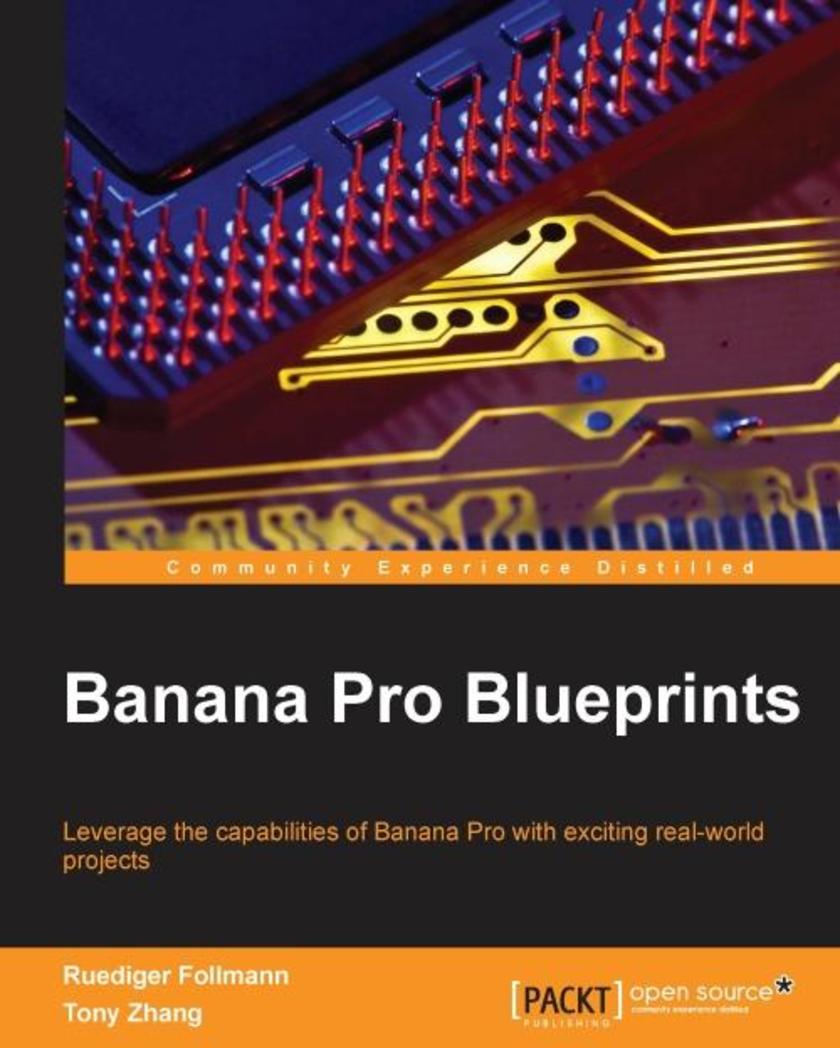
Banana Pro Blueprints
¥90.46
Leverage the capability of Banana Pi with exciting real-world projects About This Book Delve into the expanse of Banana Pi’s self-managing functionalities and develop real-world projects Gain hands-on experience of developing various wireless, multimedia, robotic, and sensor-based applications with Banana Pi Develop your applications using Banana Pi through a project-based approach Who This Book Is For This book is designed for those who are interested in exploring the capabilities of Banana Pro. Basic know-how of Linux and embedded systems would be an added advantage. What You Will Learn Remotely connect to Banana Pro and program the embedded board Use Banana Pro as a hotspot or provide an AirPlay server for wireless audio transmission Find out about the different programming languages that can be used with Banana Pro Build and program your own multimedia centre in order to watch television and movies Connect peripherals such as a camera, LCD, or hard disk to Banana Pro Manage and regulate your Linux system with Banana Pro Stream music wirelessly from your mobile phone to Banana Pro In Detail This book follows a tactical plan that will guide you through the implementation of Banana Pro and its configurations. You will then learn the various programming languages used with Banana Pi with the help of examples. In no time at all, you’ll be working on a wireless project that implements AirPlay servers, hotspots, and so on. Following this, you’ll develop a retro-style arcade kiosk game. Then we’ll move on to explore the multimedia features of Banana Pro by designing and building an enclosure for it. After this, you’ll learn to build a remote-controlled smart car and we’ll examine how to control a robotic arm. The book will conclude with the creation of a home sensor system that has the ability to expand or shrink to suit any home. Style and approach This book follows a project-based approach that covers the most important features of Banana Pro. Every chapter dives into the practical side of the implementation.
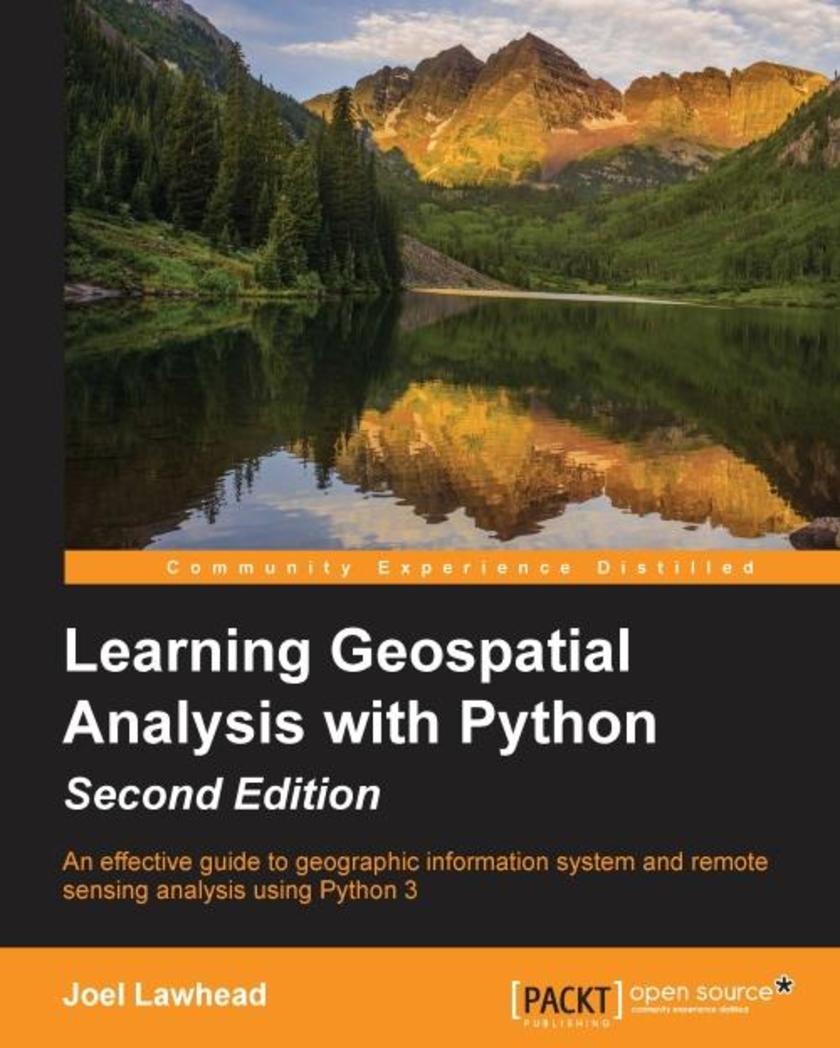
Learning Geospatial Analysis with Python - Second Edition
¥90.46
An effective guide to geographic information systems and remote sensing analysis using Python 3 About This Book Construct applications for GIS development by exploiting Python This focuses on built-in Python modules and libraries compatible with the Python Packaging Index distribution system—no compiling of C libraries necessary This practical, hands-on tutorial teaches you all about Geospatial analysis in Python Who This Book Is For If you are a Python developer, researcher, or analyst who wants to perform Geospatial, modeling, and GIS analysis with Python, then this book is for you. Familarity with digital mapping and analysis using Python or another *ing language for automation or crunching data manually is appreciated. What You Will Learn Automate Geospatial analysis workflows using Python Code the simplest possible GIS in 60 lines of Python Mold thematic maps with Python tools Get hold of the various forms that geospatial data comes in Produce elevation contours using Python tools Create flood inundation models Apply Geospatial analysis to find out about real-time data tracking and for storm chasing In Detail Geospatial Analysis is used in almost every field you can think of from medicine, to defense, to farming. This book will guide you gently into this exciting and complex field. It walks you through the building blocks of geospatial analysis and how to apply them to influence decision making using the latest Python software. Learning Geospatial Analysis with Python, 2nd Edition uses the expressive and powerful Python 3 programming language to guide you through geographic information systems, remote sensing, topography, and more, while providing a framework for you to approach geospatial analysis effectively, but on your own terms. We start by giving you a little background on the field, and a survey of the techniques and technology used. We then split the field into its component specialty areas: GIS, remote sensing, elevation data, advanced modeling, and real-time data. This book will teach you everything you need to know about, Geospatial Analysis from using a particular software package or API to using generic algorithms that can be applied. This book focuses on pure Python whenever possible to minimize compiling platform-dependent binaries, so that you don’t become bogged down in just getting ready to do analysis. This book will round out your technical library through handy recipes that will give you a good understanding of a field that supplements many a modern day human endeavors. Style and approach This is a practical, hands-on tutorial that teaches you all about Geospatial analysis interactively using Python.
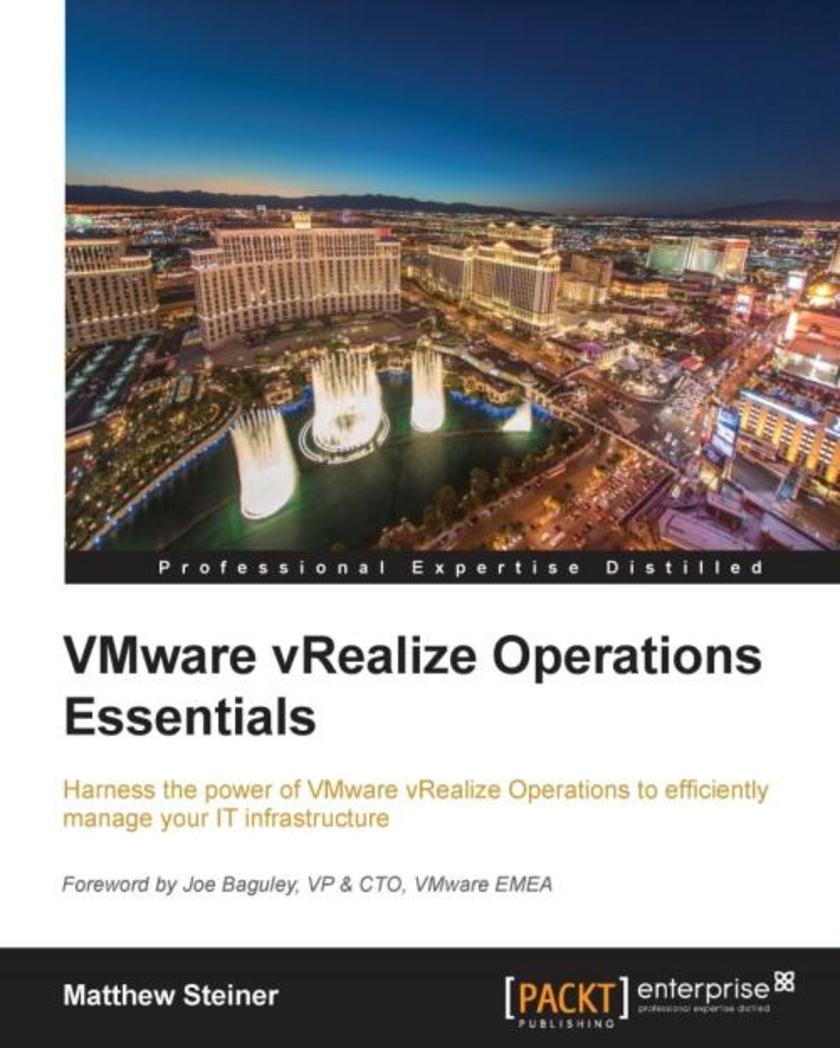
VMware vRealize Operations Essentials
¥80.65
Harness the power of VMware vRealize Operations to efficiently manage your IT infrastructure About This Book Extract the optimum performance, availability, and capacity of your IT infrastructure with the help of vRealise Operations Manager Leverage the power of strategic reports to drive tactful decision-making within the IT department A pragmatic guide to proficiently manage your applications and storage Who This Book Is For If you are a vSphere administrator and wish to optimize your virtual environment, this book is your go-to guide on vRealize Operations. As a vSphere administrator, it is assumed that you have a good understanding of both physical and virtual infrastructure. A basic knowledge of application monitoring and log analysis would be useful when we dive into the capabilities of the solution. What You Will Learn Architect, design, and install vRealize Operations Migrate from the previous vCenter Operations Manager 5.x version, configure vR Ops policies, and create custom groups Use out-of-the-box Dashboards, Views, and Reports and create your own customized Dashboards, Views, and Reports Apply the Alerting framework of Symptoms, Recommendations, and Actions, and create your own Alerting content Leverage the power of Capacity Planning to maximize the utilization of your virtual infrastructure Manage the rest of your infrastructure, including storage and applications, with vRealize Operations Management Packs Extend the solution with vRealize Hyperic and Log Insight In Detail This book will enable you to deliver on the operational disciplines of Performance, Health, Capacity, Configuration, and Compliance by making the best use of solutions provided by vRealize Operations. Starting with architecture, design, and sizing, we will ensure your implementation of vRealize Operations is a success. We will dive into the utilization of a solution to manage your vSphere infrastructure. Then, we will employ out-of-the-box Dashboards and the very powerful Views and Reporting functionality of vRealize Operations to create your custom dashboards and address your reporting requirements. Next, we go through the Alerting framework and how Symptoms, Recommendations, and Actions are used to achieve efficient operations. Later you will master the topic of Capacity Planning, where we look at how important it is to craft appropriate policies to match your requirements, and we’ll consider attitude toward capacity risk, which will aid you to build future project requirements into your capacity plans. Finally, we will look at extending the solution to manage Storage, Applications, and other IT infrastructures using Management Packs from Solution Exchange, as well as how the solution can be enhanced with the integration of Log Insight. Style and approach This book is a pragmatic, step-by-step guide that will quickly build your knowledge of the key capabilities of vRealize Operations. As well as learning about the solution, we will provide you with real-world examples that will help you customize and enhance your virtual environment.




 购物车
购物车 个人中心
个人中心



